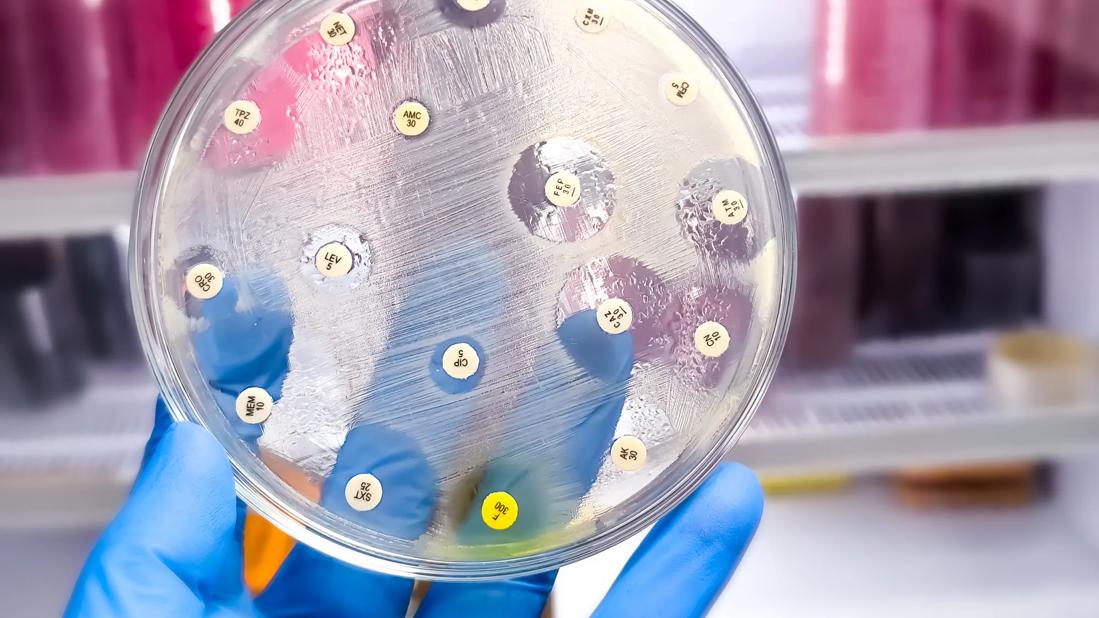How this technology is improving antibiotic use and stewardship

A new study by Cleveland Clinic scientists shows how machine learning can predict which antibiotic will be best for a patient’s urinary tract infection, with the potential to improve patient outcomes and reduce antibiotic misuse. Now, the researchers are planning to use quantum computing to refine the algorithms, with intentions of making it even faster and more accurate.
Advertisement
Cleveland Clinic is a non-profit academic medical center. Advertising on our site helps support our mission. We do not endorse non-Cleveland Clinic products or services. Policy
The project will be one of the first medical applications of quantum-enabled machine learning in the world and the first urologic application. It will use IBM Quantum System One, the world’s first quantum computer dedicated to healthcare research. The computer is housed at Cleveland Clinic as part of the Discovery Accelerator, a collaboration between Cleveland Clinic and IBM.
“We’re very excited to be among the first researchers using quantum computing to solve a medical problem,” says lead author of the study, Glenn Werneburg, MD, PhD, of Cleveland Clinic. “But even more important is finding solutions for the serious clinical problem of antibiotic resistance, improving patient care, and ensuring that we get this technology out to as many patients as possible.”
The study, “Machine learning predictive model development and validation for antibiotic susceptibility of urine culture: framework to reduce morbidity and improve antibiotic stewardship,” was published in BJU International.
It typically takes around three days for a urine culture to identify the strain of bacteria causing a UTI and for antibiotic susceptibility testing to then determine which antibiotics will be effective. During that time, providers use their best judgment in prescribing an antibiotic; however, research has shown that this choice provides inadequate coverage for the infection around 30% of the time. Researchers wanted to develop a tool that could quickly and accurately predict which antibiotics will be most appropriate on a patient-by-patient basis.
Advertisement
The team developed and trained machine learning algorithms to predict susceptibility or resistance using more than 4.7 million antibiotic susceptibility classifications from urine cultures for adult patients in both outpatient and inpatient settings over a 10-year period. They then validated the results using patient data from a hospital system in a different geographical area. Finally, the algorithms were clinically validated in a group of contemporary patients, and the results were compared to the antibiotics that were actually prescribed by physicians.
The researchers found that the algorithm’s predictions were accurate for all 11 tested antibiotics and that results remained accurate when tested in a geographically distant hospital. They also found that the medication suggested by the algorithm provided adequate coverage more often than the one chosen by a physician.
“The algorithm takes in a number of factors at the time the urine culture is collected, and we get an immediate turnaround to a list of antibiotics and their probability of susceptibility and resistance for the given patient,” Dr. Werneburg says.
Factors considered by the algorithm include patient demographics, comorbidities, hospital resistance patterns, and geographical classifications, he says. Laboratory data may also be considered as it’s available, including the patient’s history of bacteria that may have grown on their cultures in the past.
Sandip Vasavada, MD, Urologic Director, Center for Urogynecology and Reconstructive Pelvic Surgery, says that the technology will enhance providers’ ability to best select an antibiotic for a suspected infection and prevent the need for an antibiotic change.
Advertisement
“This helps address a major international problem in antibiotic stewardship that is of critical importance to anyone who prescribes these drugs,” he explains, adding, “Quantum-computing technology may help us achieve this faster than any conventional techniques.”
In addition to improving speed and accuracy, researchers hope to now use quantum-based machine learning to empower the algorithm to train on smaller data sets, making it more accessible to a variety of different patient populations.
Dr. Werneburg says the team would also be working with partners to develop the algorithm for clinical use, with a goal of making it available in a wide range of settings, from hospitals to small clinics.
“Antibiotic resistance is among the top threats to humanity today, and one of the main drivers is the inappropriate use of antibiotics,” he says. “Here, we have a solution to rapidly identify antibiotics that would be most appropriate for each patient’s unique scenario. Thus, we have the potential to optimize antibiotic use and stewardship and improve future antibiotic resistance patterns.”
Advertisement
Advertisement

Up to 3 days faster than waiting for urine culture results

Fixed-dose single-pill combinations and future therapies

Reproductive urologists publish a contemporary review to guide practice

Two recent cases show favorable pain and cosmesis outcomes

Meta-analysis assesses outcomes in adolescent age vs. mid-adulthood

Proteinuria reduction remains the most important treatment target.